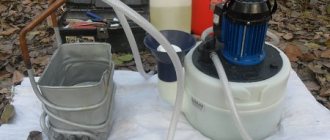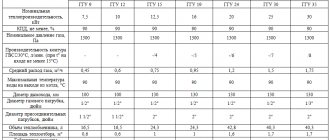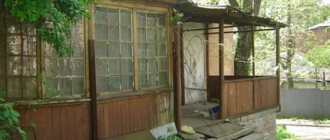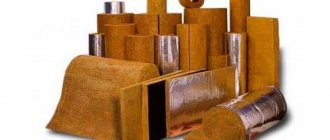Purpose
Heat exchanger is a device for transferring heat from one medium to another. Cold transfer is not possible. Even in a refrigerator, the heat exchanger takes away excess heat rather than transferring cold. The coldest substance is warmer than absolute zero. Transmission occurs through insulating material. Rules:
- The insulating material must be a thermal conductor.
- It should not allow one medium to pass into another, otherwise mixing will occur.
To increase the effectiveness of the first condition, the surface area is increased. For example, soldering plates perpendicular to the tubes. They try to make the walls of the insulating material thinner. Limits the pressure of the environment. The heat exchanger material affects heat transfer.
Criterias of choice
The main parameter of a heat exchanger is its power.
When choosing a device, the purpose is taken into account - in this case it is heating the coolant, and the type of medium - steam, water, antifreeze. A gas boiler usually works with water, but there are exceptions.
Other selection criteria:
- Coolant temperature at the inlet and outlet - it is necessary to calculate how much heat the consumer should receive. Based on these data, the heat exchanger power is calculated.
- Allowable pressure losses - the water pressure decreases as it passes through the heat exchanger. If it falls too low, it will not be possible to create a column of hot water of sufficient height.
- The maximum operating temperature on the burner reaches 600–700 C. A cast iron and steel heat exchanger can withstand this temperature; copper heat exchangers can withstand this temperature with some difficulty. The aluminum model must not be used.
- Maximum operating pressure – does not limit the choice of design or material.
Dimensions are a significant parameter. With the same efficiency, a shell-and-tube heat exchanger occupies an area 3–4 times larger than a plate heat exchanger.
Classification, principle of operation
There are two media in a gas boiler - gas and liquid. To transfer the air temperature obtained during gas combustion to the coolant, a heat exchanger is used. There are:
- primary;
- secondary;
- biothermal (combined).
Primary
Primary - heat exchangers that receive heat from a source. Included in the heating circuit. They are located in the boiler above the gas nozzles (a coil covered with plates). The coolant, usually water, passes through the tubes. Hot gases passing through plates and tubes heat the water. It is driven through the pump and goes into the heating. Gases are removed through the chimney.

Primary maintenance
Secondary
Secondary heat exchangers receive heat from the heated coolant. They are located outside the combustion chamber. Heating comes from the liquid. The simplest and most commonly used method is to use a plate heat exchanger. The sealed housing is divided into two parts by a thin partition. Heated liquid flows on one side of the partition, and water takes up heat on the other.

Sectional view of secondary plate heat exchanger
There is another way. A coil passes through a large container filled with water. A heated coolant passes through it, giving off heat to the surrounding fluid.
Combined (biothermal)
Installed inside the firebox. Has four pipes. One pair is connected to the heating circuit, the other to the DHW (hot water supply).

Biothermal heat exchanger
The difference is within the design. The heating circuit is heated by hot gases, the hot water supply circuit is heated by the heating gas. Inside the coil tubes there are tubes of smaller diameter. They are fastened with plates located at an angle of 120 or 90⁰.

Cut tubes, slots for contours
During operation of the boiler, the liquid in the primary circuit (heating) heats up and goes into the system. Previously, part of the heat is transferred to the tubes of the second DHW circuit, where the coolant is also heated.

Differences between a biothermal circuit and one with two separate heat exchangers
When water is drawn from the second circuit, the first circuit is closed so that the heat received from the boiler is transferred to the hot water supply. When the collection of water from the hot water supply stops, the first circuit is connected and the heating starts working.
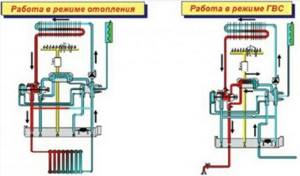
Schemes in two modes
How to choose power for a room and calculation formula
The power of gas boilers is selected based on the area of the premises. The simplest formula is that 1 kW of boiler power is taken into account per 10 m2 of area.
This technique is most effective for rooms with a height of no more than 3 m . If the ceilings are higher, it is necessary to slightly reduce the ratio of the size and power of the unit.
For double-circuit boilers, the power should be increased by 20% to compensate for losses in water heating.

Materials
Substances transfer heat in different ways. It is necessary to take into account pressure, maximum heating temperature, and corrosion resistance. Heat exchanger materials:
- steel;
- cast iron;
- copper;
- aluminum.
What are the differences?
Steel
The heat exchanger made of steel is the most durable. Tolerates pressure and temperature changes well. Can be repaired and is cheaper than other materials. Disadvantage: severe corrosion. Stainless steel heat exchangers last a long time.
Cast iron
Cast iron models tolerate exposure to water well and are difficult to corrode. They take longer to heat up than steel ones, but stay hot longer. The fragility of the material does not allow impacts.
Carefully. Cast iron does not tolerate sudden changes in temperature. If it is necessary to replenish the system with water, the boiler must be cooled before filling.
To remove scale, the heat exchanger is washed at intervals:
- once a year if running water is used;
- once every 2 years, when using antifreeze;
- once every 4 years, when the coolant is purified water.
Cast iron is the heaviest material.
Copper
Copper transfers heat well, can be soldered, and is lightweight. Almost resistant to corrosion.
Advice. If you install it yourself, you may make a mistake. If there is an electrical circuit in the wall behind the boiler, fistulas will appear in the heat exchanger.
Disadvantages: cost, they burn out quickly.
Aluminum
Lightweight heat exchanger with good thermal characteristics. Does not tolerate scale and requires annual maintenance. Disadvantages: heavy soldering and welding.
The main function of a heat exchanger for a boiler

Gas and air are supplied to the boiler burner for combustion. The gas burns, releasing heat, and the combustion products are discharged outside. The heat source in this case is a stationary element.
The coolant - water or antifreeze - enters the heat exchanger. This is a device that provides heat exchange between two environments with different temperatures. The latter is located in the combustion chamber above the burner. Water, moving through the heat exchanger, is heated and supplied to the heating pipes. Most often, the device takes the form of a set of plates or tubes. The larger its working surface, the better and faster the water heats up.
Manufacturers, reviews
Based on reviews, you can get a picture of quality and hidden problems.
Thermona
Czech manufacturer, can work with antifreeze. Floor and wall models. Works with different types of gas. You can select a unit with the required power. Available with one or two circuits. Heat exchangers are made of different materials, they can be primary, secondary, biothermal. Equipped with automation. The service life promised by the manufacturer is 15 years, with a cast iron heat exchanger - 25 years.
Review of the THERM 35 EZ/B model: the user says that at first it was good, but after a while the burner began to work poorly and had to be sent in for service repair.
Hydrosta
The South Korean company Gofra-E produces a wall-mounted double-circuit boiler. Power - 11.6 - 46 kW. The automation is assembled on a microprocessor. There is a digital display, sound alarm, and a portable control panel. The room thermostat expands the capabilities of the device.
Buyers complain about the high price, but are satisfied with the quality. The boiler is repairable, with parts available for repair.
Master Gas
Since 2010, the Armavir Gas Equipment Plant has been producing boilers with a capacity of 24–30 kW. The heat exchanger is double-circuit, secondary, plate. The difference is that the combustion chamber is covered with dark glass. Korean Master Gas Seoul is double-circuit, with a power of 14–21 kW. For DHW - 20.9 kW. Gas consumption - 620/1990 l/h (minimum, maximum). The coolant is water. Temperature control range 40–80⁰С, for hot water supply 37–60⁰С. There are no complaints from users.
Arderia
In 2008, the first wall-mounted boilers appeared, jointly produced by Russia and a South Korean company. In 2015, production became domestic. The plant is located in the village of Enem, near Krasnodar. Reviews are contradictory; at the beginning of production there were complaints about noise and high gas consumption. Another user complained about a malfunction of the three-way valve; it turned out that it needed to be disassembled and lubricated. Happened after three years of use.
Fondital Victoria Compact
Italian company. The biothermal copper heat exchanger makes it possible to use the boiler for heating and domestic hot water. Electronics protect the gas appliance from freezing. Good feedback from users.
Saunier Duval
Made in France. Primary circuits are made of copper and steel plate circuits for hot water supply. Equipped with pressure sensors. The portable remote control allows you to program gas heating for a week. The reviews are positive; for some, the boiler has worked for more than 10 years. The service received criticism - expensive repairs of components.
Demrad
Large Turkish company. The boiler has two circuits, circuits with separate, joint (biothermal) heating. The heating circuit is a primary steel heat exchanger; for hot water supply, a copper plate heat exchanger is used. Combustion chamber - open, closed. Some users note the unreliability of the design and expensive repairs.
AEG
Famous German company. The gas burner flame adjusts to the water flow and prevents sudden temperature changes. There is a security system. Adjusts to changing gas pressure in the range of 13–20 mBar. The downside is the high price of the product and repairs.
"Beleto"
The famous Tula plant also produces gas equipment. The boiler has one or two circuits. The double-circuit heat exchanger uses a copper heat exchanger. The combustion chamber is closed, open. Power - 12.5 - 20 kW. A special feature is energy independence, the boiler can operate with natural circulation. Reviews are mixed.
Types of gas boilers with two circuits
The operating features of gas equipment are largely determined by the design version of the heating device. Modern boilers are available in two form factors - floor-mounted and wall-mounted.
When choosing a design option, you need to focus on the size of the heated area and the activity of using the hot water system. You need to understand that wall-mounted boilers are more compact, but at the same time they have much less power.
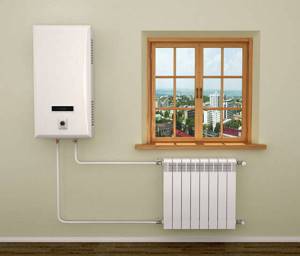
The double-circuit wall-mounted gas boiler has a compact size and modern design, but is only effective when heating small areas with moderate hot water consumption
The choice of a wall-mounted double-circuit boiler may be justified if the heated area does not exceed 200 sq.m, and the total productivity of the hot water system does not exceed 14 l/min.
The small size of a wall-mounted boiler, although it seems like an advantage, actually hides many disadvantages. Compactness is achieved through the use of thinner heat exchanger tubes. In addition to the fact that they have a shorter service life, there is a possibility of clogging.
In floor-standing installations, more massive and reliable cast iron heat exchangers are used. This not only increases the reliability of the heating device, but also extends its service life.
Malfunctions, repairs
Gas heaters have light indication. It is intended to notify of malfunctions. Each manufacturer creates its own character code contained in the passport. If you don’t have a passport, you can download it on the Internet. Malfunctions can be divided into two categories:
- those that can be eliminated on your own;
- requiring specialist intervention.
What you can fix yourself is not specified in the passport. Common heat exchanger failures:
- depressurization;
- blockage
Elimination of leaks is carried out with a soldering iron, welding, depending on the metal. The second malfunction occurs due to poor-quality coolant, scale. Eliminated by washing. To remove scale, you can use phosphoric acid or citric acid. The first one is more effective. How to do it is shown in the video:
Sometimes there is a manufacturing defect, but more often the malfunction occurs due to improper use of the devices. If you strictly follow the manufacturer's recommendations, the product will last a long time and with high quality. Boiler repair:
Average score of ratings is more than 0
Share link
Comments There are no comments yet, but you could be the first...

